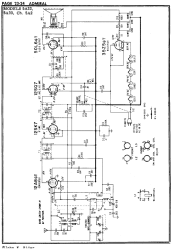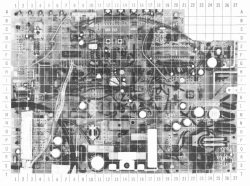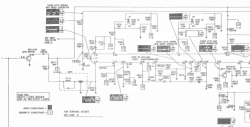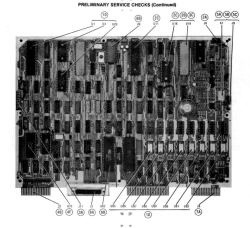There was a time when, if you were handy with a soldering iron, you could pretty easily open up a radio or TV repair business. You might not get rich, but you could make a good living. And if you had enough business savvy to do sales too, you could do well. These days there aren’t many repair shops and it isn’t any wonder. The price of labor is up and the price of things like TVs drops every day. What’s worse is today’s TV is not only cheaper than last year’s model, but probably also better. Besides that, TVs are full of custom parts you can’t get and jam-packed into smaller and smaller cases.
Case in point, I saw a “black Friday” ad for a 40-inch 1080p flatscreen with a streaming controller for $98. Granted, that’s not huge by today’s standards and I’m sure it isn’t a perfect picture. But for $98? Even a giant high-quality TV these days might cost a bit more than $1,000 and you can get something pretty great for well under $500.
Looking back, a Sears ad showed a great deal on a 19″ color TV in 1980. The price? $399. That doesn’t sound too bad until you realize that today that would be about $1,400. So with a ratio of about 3.5 to 1, a $30/hour service call would be, today, $105. So for an hour’s service call with no parts, I could just buy that 40″ TV. Add even one simple part or another hour and I’m getting close to the big league TVs.
Did you ever wonder how TV repair technicians knew what to do? Well, for one thing, most of the time you didn’t have to. A surprising number of calls would be something simple like a frayed line cord or a dirty tuner. Antenna wires destroyed by critters was common enough. In the tube days, you could pretty easily swap tubes to fix the bulk of actual problems.
Back to the Shop: Riders and Sams
Many shops would send out a junior guy to check out simple things, and then bring everything else “back to the shop” where someone who knew what to do would troubleshoot at the component level. Amazingly, many TVs and other consumer electronics at one time had schematics inside the cabinet for the service person. They were often cramped, though.

There were better options. Rider would grab data from all the consumer electronics they could find and they would publish all of it in huge volumes, sometimes a total of 2,000 pages a year. Many of these old volumes are available on the Internet.
The other major publisher of service data was Sams Photofacts. These folders would have detailed information compiled about major TVs, radios, CB transmitters, and in a few cases, computers.
Sams is still around and will still sell you their Photofacts, so they are harder to find online. However, there are some around if you look. You can also often buy used originals just like you buy a used book. Apparently, the copyright is out on a few of the older ones and there are third parties that will sell copies of those, too. You can sometimes find them at libraries, too.
The Photofact folders were usually very detailed. They would show disassembly instructions and in addition to the schematic, show nominal operating waveforms for the gear, too. It wasn’t unusual to see a picture of a PCB with a grid of letters and numbers to help you find parts on a crowded board.



These were akin to the car manuals people often buy for their vehicles. Most service shops would buy these up and save them in case a certain brand of set came in again or the same set needed service later.
Parts
Parts were probably easier to find, too. Now you have many proprietary chips and assemblies that are difficult to source and may not even be marked. Tubes, of course, were ubiquitous. For other parts, service shops often relied on distributors like ECG, which became NTE. They would take parts with wide applicability and package them. They also produced cross-reference books that would tell you what parts you could use to replace common consumer electronics parts.
RCA also provided a similar service with RCA SK transistors and Motorola had HEP as their brand name. Generally, these parts were very expensive compared to what a hobbyist might pay, but they were readily available and were known to fit, so they were often used in the service business. NTE is still around and you sometimes find a store with stock of ECG or SK parts, usually in hanging plastic bags or blister packages.
Reuse, Recycle
There is something appealing about repairing things instead of junking them. It should be good for the pocketbook and it is certainly good for the environment. However, the sad case today is that many things are made to be unrepairable. Even if there were parts and schematics, unless you can do it yourself like many of us can, paying someone to do the repair is probably infeasible. Times have changed. Unless, of course, you can find a Repair Café.
0 Commentaires